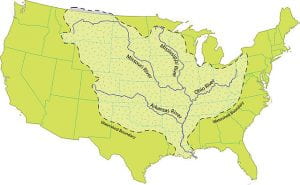
Doctors worldwide are prescribing a new treatment for their patients. It isn’t administered in the hospital. It isn’t found at the pharmacy. It isn’t even available for individual patients. Instead, this treatment requires the unified effort of world leaders: the protection of our climate by reducing greenhouse gas emissions.
Disease and climate change are directly connected, argue the experts behind the Lancet Countdown, an annual report of the leading public health and climate science research.
The newly released report reaffirmed the conclusion it has come to since it was established in 2015: burning fossil fuels is making us sick. That’s right, the basis for our modern-day energy systems is undermining our health. This isn’t a projection for the future, it’s a prognosis for today. If world leaders don’t drastically reduce greenhouse gas emissions, the report makes clear that the results will be devastating.
The Lancet Countdown breaks down this prognosis into four categories: heat, natural disasters, infectious diseases, and access to nutrition.
Heat Waves and Beyond
Yes, we’ve heard. Climate change is making our planet hotter. But, it’s more than just heatwaves driving up the risk of heat strokes. A 1-2C change in global temperature can have other less recognized impacts on our health. For example, continued exposure to higher temperatures stresses our heart and lungs, even if we can’t feel that stress in the moment. This then creates or worsens cardiovascular and respiratory diseases like heart attacks, heart failure, and chronic obstructive pulmonary disease.
These effects are magnified when high temperatures are combined with air pollution, an all too common combination. The presence of both high heat and high air pollution in a given area can triple cardiovascular mortality rates.
No region in the world is immune to the extremes of heat. Vulnerability to high temperatures and its resulting illnesses “has worsened everywhere” warn the authors of the Lancet Countdown. A hotter climate puts our national health at stake.
Natural Disasters and Unnatural Consequences
Fires, floods, hurricanes, tornadoes are all intensified by climate change, and this has doctors and public health researchers worried.
When a community is hit by a natural disaster, let’s say a flood, three things happen. First, there is direct death and injury such as by drowning or building collapse. Second, there are after-effects like water-borne diseases or limited access to health care. Third, there are effects on healthcare infrastructures as a whole. The Lancet Countdown surveyed the health infrastructure of over 800 cities, looking at hospitals, primary care facilities, and emergency services, and concluded that public health infrastructure in almost 70% of these global cities will be “seriously compromised” by climate change-induced natural disasters. That is no small number. The health infrastructure of our cities, helping patients with everything from broken bones to chronic diseases, will be compromised by climate change. Is that a risk we want to take?
Let’s Talk about Bugs
Now for some good news: A warming climate isn’t bad for all species. Many species are directly benefiting from these hotter temperatures!
The bad news: Those species happen to be bugs and bacteria, which carry a host of diseases like malaria, dengue, West Nile virus, Lyme disease, cholera, E. Coli, and many more.
The Lancet report found that of all the vector-borne diseases they track, global transmission rates have increased for every single one. On top of that, all pathways of infection are being affected: food, water, and animals.
Food for Thought, but not Consumption
Lastly, climate change threatens global food systems. The pronouncement is clear: crop yields are decreasing as demand for food is increasing. Staple crops such as corn, wheat, soybeans, and rice are already seeing declining crop yields due to climate change.
In less than ten years, the global number of malnourished people will increase by 840 million due solely to climate change, disproportionately affecting countries already facing malnutrition and poverty. This is nearly three times the U.S. population.
Prescription: What can we do about it?
There is a common misconception that climate change just affects polar bears on melting icebergs. Even when we do think about climate change’s effects on humans, we often imagine those effects to be far off into the future. I say “we” because I previously held these beliefs. But they are inaccurate.
The Lancet Countdown makes clear that climate change is about our health and well-being in the present moment. It is nothing short of a code red emergency.
The connection between the energy systems we depend on and the health of our bodies is clear. Burning fossil fuels is making us sick. The prescription then is also clear. For the doctors and public health professionals behind the Lancet Countdown, protecting our health means meeting our commitments under the Paris Agreement.
The future these researchers describe is grim, but I believe this report can serve as a rallying cry for action rather than scaring us into inaction. Both the problem and its solutions are laid out in front of us. We know what needs to be done to protect our health. We just need to make sure we act on the knowledge we have.














